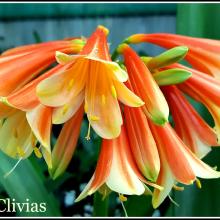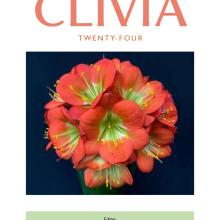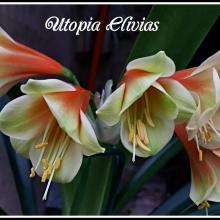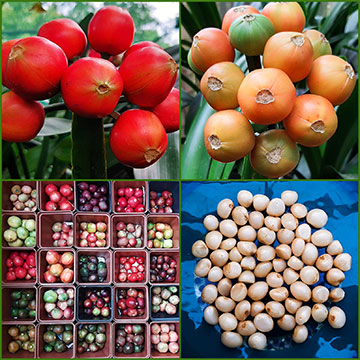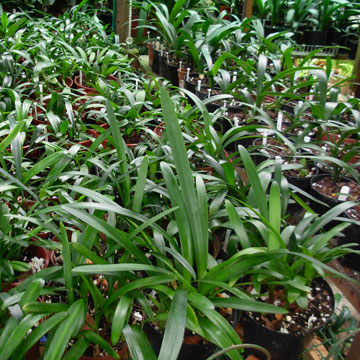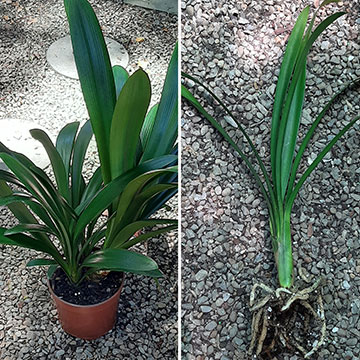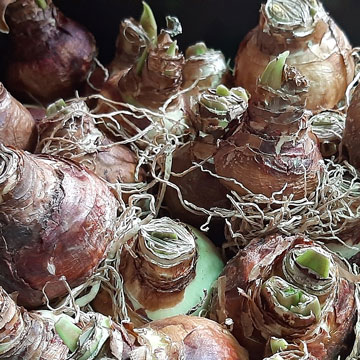Interspecific breeding: by Carrie Kruger Utopia Clivias
A: Why do we breed with interspecifics?
We consider interspecific breeding as the “new age” of breeding
Most of the new and unusual colours in Clivias originate from interspecific breeding
We at Utopia Clivias believe that the future of Clivias lie hidden in these genetics.
The largest range of colours are found in interspecific flowers.
From orange to yellow, pastel peach and pink, bronze and green and now multi colours and versi colours
B: Interspecific breeding through the years.
The term “interspecific” says it all, interbreeding with different species of Clivia.
The first crosses were made years ago between Nobilis and Miniata and were named “Cyrtanthiflora”
Breeders have since crossed all the various species with miniata and vice versa.
Some proven results of F1 breeding are that using miniata as a pod parent will give larger more open flowers in the first generation.
We see the F1 generation of interspecifics only as a stepping stone to much better, more diverse flowers in the second and third generations.
Advice to beginners: Start your breeding with a good F1
Comparison between F1 and F2 generations
1. F2 flowers are larger and more open
2. F2 flowers have a larger array of colours
3. Plants flower at different times due to the larger genetic make up
C: About our breeding lines:
The “Secret” Series
These plants were bred from the same cross. Stella Parish Miniata x 5 Star (Gardenii x group 1 yellow)
They are all the most beautiful pink F2 interspecifics with large, open recurved flowers.
I am currently line breeding with these plants and the first F3 plants flowered in 2016.
I have found the F3 flowers larger with softer pink shades.
These plants have all been registered on the International Clivia Register
The “Dream” series
These are all selfed seedlings of a Nakamura bred interspecific, grown from seed.
The first selfing of this plant only produced about 8 -10 seeds which grew into these magnificent plants.
The flowers are large and semi-open.
These plants all have flowers with picotee-type edging, and semi to broad leaves, up to 90mm.
We are line breeding these plants as well as using them in other crosses.
I started with some experimental crosses between the “Secret Series” and the “Dreaming” range of plants.
The first one flowered last year. A soft pastel with darker pink outer petals and darker pink blush on inner petals
New Versi Colour Range
We are breeding a new range of versi colours from different breeding material.
They range from pink versi colours to dark red and brick brown versi colours.
Versi colour genes are very dominant and are carried over to the next generation even as only the pollen parent.
We have flowered some very special versi colour flowers last season.
“Star Green” breeding
The famous “Star Green” is used in this breeding line.
“Star Green” is truly a one of a kind flower with dark brick red outer petals and green inner petals which gradually change to a dusty pink as it matures.
“Star Green” is not a very fertile plant and has to be pollinated at an early stage as the flower opens. The pollen stays viable for a day or two where you have to be prompt to harvest every bit of pollen as the sacks open. Thereafter, it becomes brittle, dry and unusable.
It does not self-pollinate effectively, but in some instances a small number of seed has set on self-pollinations.
We have done a variety of pollinations onto “Star Green” as well as using the pollen on many other plants.
I think extremely exciting times lie ahead with this beautiful and unusual plant.
Cultivation and care:
Interspecifics are no different to miniata when it comes to cultivation requirements.
They require water once a week if it does not rain during the hot months.
In winter we water sparingly and only if necessary.
Our planting mixture consists of a well drained mix of fine and coarse bark, filter sand, polystyrene and “Flexi Coat” slow release fertilizer.
Mature plants are fed with Hyper Feed every 3-6 months
Seedlings and young plants are fed with “Kick Start” every 8 weeks.
Plants are treated with a systemic insecticide and fungicide once every 6 months
4. Conclusion:
Interspecifics give us a longer flowering period as they start flowering from June to September.
They are fast growing and more disease resistant than miniata.
They multiply well.
The range of colours and forms of flowers are unlimited and they are therefore a must in any breeder`s collection.
I hope I have inspired you all to include a few of these special plants in your collections.



















